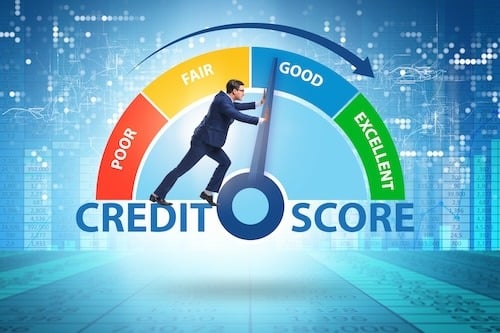Smart Money Moves: When Does Borrowing for Seasonal Expenses Make Financial Sense?
Did you know that the average American plans to spend over $800 on holiday gifts alone this year, despite nearly half of households reporting worse...
Whether you're covering unexpected expenses, making a big purchase, or just need extra cash, our personal loans offer simple, flexible funding tailored to your needs.
Simplify your finances with a loan that combines multiple payments into one. Our consolidation loans help reduce stress and keep your budget on track.
Upgrade your living space with financing designed for renovations, repairs, or remodeling. Our home improvement loans help you enhance your home’s comfort, value, and functionality—on your terms.
Explore expert insights, financial tips, and strategic guidance from the Symple Lending team. Our insights and resource articles are your go-to source for empowering content that helps you make informed decisions on your journey to financial freedom.
Stay up-to-date with the latest press releases, media features, and major announcements from Symple Lending. This section showcases how we're making headlines and driving innovation in the lending industry.
4 min read
K. Pierce : Oct 15, 2024 12:00:00 AM

Americans are struggling to stay afloat as inflation-generated waves widen the gap between their take-home pay and the costs of goods. Many argue that these aren’t regular waves, as they bear an eerie resemblance to tsunamis. Inflation hit a 40-year high in June 2022, injecting anxiety into the lives of most American families. Navigating the raging waters is not only causing headaches for people, but it’s also forcing them to make drastic changes in how they live. With each upward tick of inflation, the standard of living takes another tumble.
Since wages aren’t keeping pace with the skyrocketing costs of food, gas, and utility services, average consumers have hit the brakes on discretionary spending. According to data crunches, U.S. households are spending an extra $350 to $500 each month to purchase the same goods and services compared to one year ago.
When asked about their level of satisfaction with their families’ financial condition, most admit that it’s bleak; their paychecks have been stretched so thin they find it impossible to stick to a budget. Those who have a nest egg are raiding their savings monthly to keep food on the table and gas in the tank – these two commodities have seen the most dramatic price hikes. In August 2022, the Bureau of Labor Statistics issued a report stating that food prices have risen 11.9% in the last year. This was not breaking news to consumers. And approximately 40% of respondents in recent studies indicate they are unable to save, as their cash flow has been reduced to a trickle.
Americans compensate for the pain inflicted by price hikes by turning to discount stores – or purchasing store brands instead of name brands. When possible, they buy in bulk. Many have placed dining out and entertainment on the chopping block. Some are canceling streaming services they relied on to get through the pandemic lockdown boredom. Since these budget alterations don’t always absorb the rising costs, many consumers continue to look for insulation elsewhere.
For younger Americans, this may be the first encounter with runaway inflation. But the nation has seen this movie before; inflation soared into the stratosphere four decades ago, hitting a high-water mark in late 1981.
Knowing these factual nuggets may be educational, but it doesn’t lower the cost of packaged goods – or anything else. And sadly, economists insist this is the new normal. It’s not like a short-lived brutal cold snap or sweltering heat wave. Financial experts forecast this intense financial squeeze will linger through most of 2023.
Inflation is tightening its grip on Americans of all ages and demographics. The rapidly accelerating prices are causing extreme financial pain for all. Borrowing options for low-income earners and ones with low credit scores are limited. But it hasn’t brought spending to a screeching halt; a company that tracks national credit scores noted that balances for borrowers with scores under 660 climbed 25% higher than at this point last year.
Families with children have also had to make hard financial decisions. Somethings just can’t wait for inflation to subside, such as back-to-school supplies, lunches, shoes, and clothes. Senior citizens aren’t immune either, as most live on fixed incomes; picking up a part-time job may be difficult for those in this age group. The Senior Citizens League conducted a recent survey of 3,000 individuals 55 and older to learn how this group is faring. Half of the respondents stated have dipped into savings during the past year to make ends meet. Almost 50% said they have visited a food pantry or applied for government assistance. And 25% sought monetary assistance from their utility providers.
The Federal Reserve Bank of New York released a report in August 2022, revealing the gravity-defying surge in credit card balances; they increased 13% cumulatively, making it one of the highest jumps in two decades. A credit reporting bureau noted that in the first quarter of 2022, US banks issued nearly 19 million new credit cards.
Most hard-hit families are relying more on credit cards to keep up with the high cost of living. When hard-pressed to pay for essentials, a large segment of the population says they have no choice but to make a tradeoff: Buy now, pay later. With interest rates on a steep incline, making purchases on credit is not an optimal solution. But short of a magic pill or ripened money tree in the backyard, paying with plastic will at least turn on a relief valve. The problem with putting off paying today’s charges usually leads to serious debt creep. Nationwide, credit card balances ring in at a staggering $890 billion.
People have become so accustomed to the convenience of credit cards they may have forgotten about another, more cost-effective method: Personal loans. Americans run the risk of becoming overly dependent on credit cards and before they know it, are trapped in a vicious cycle of growing, revolving debt. Even the most disciplined individual in normal times finds it very tempting to overspend.
Personal loans offer multiple benefits, such as a fixed payment over the duration of the loan. If the long-term goal is to be debt free, this type of payment plan allows the borrower to know exactly when they will repay the loan. Another major benefit is that personal loans offer a more competitive interest rate than credit cards – at a fixed rate.
Individuals with multiple credit card balances can eliminate the burden of trying to remember which payment is due next. Personal loans can improve a household’s budget. Those who qualify for a personal loan may be able to pay off several outstanding credit card balances, streamlining their financial plan. Furthermore, extended loan payoff agreements may reduce the amount of monthly payments, giving borrowers more cash flow each month.
Every news outlet releases a steady diet of gloom daily. We prefer to see the sunrise side of the mountain, and not dwell on the negatives. For years, Symple Lending has been able to help families regain their footing during down economic times by offering fixed-rate loans. Contact us today and learn how we can help you get back on your feet financially and start saving for the future.
Disclaimer: The information provided in this blog post is for educational and informational purposes only and should not be considered as financial, legal, investment, or tax advice. Symple Lending is not responsible for any financial outcomes resulting from following the information or ideas shared in this blog. Every individual's financial situation is unique, and we strongly encourage readers to take their own circumstances into consideration and consult with a qualified financial, legal, tax, and investment advisor before making any financial decisions. Symple Lending does not provide financial, legal, tax, or investment advice.

Did you know that the average American plans to spend over $800 on holiday gifts alone this year, despite nearly half of households reporting worse...

Ever noticed how the "most wonderful time of the year" often coincides with your most worrisome financial moments? Nearly 70% of Americans experience...

Ever find yourself staring at your calendar in mid-December, wondering how the holidays snuck up so quickly? While everyone else seems to have their...

Did you know that a personal loan could be your credit score's best friend or worst enemy? It all depends on how you manage it. While many borrowers...

Did you know that a personal loan could either be your credit score's best friend or its worst enemy? It all depends on how you use it. While many...

In today's fast-paced world, financial burdens weigh heavily on many individuals and families, hindering their ability to achieve financial freedom...